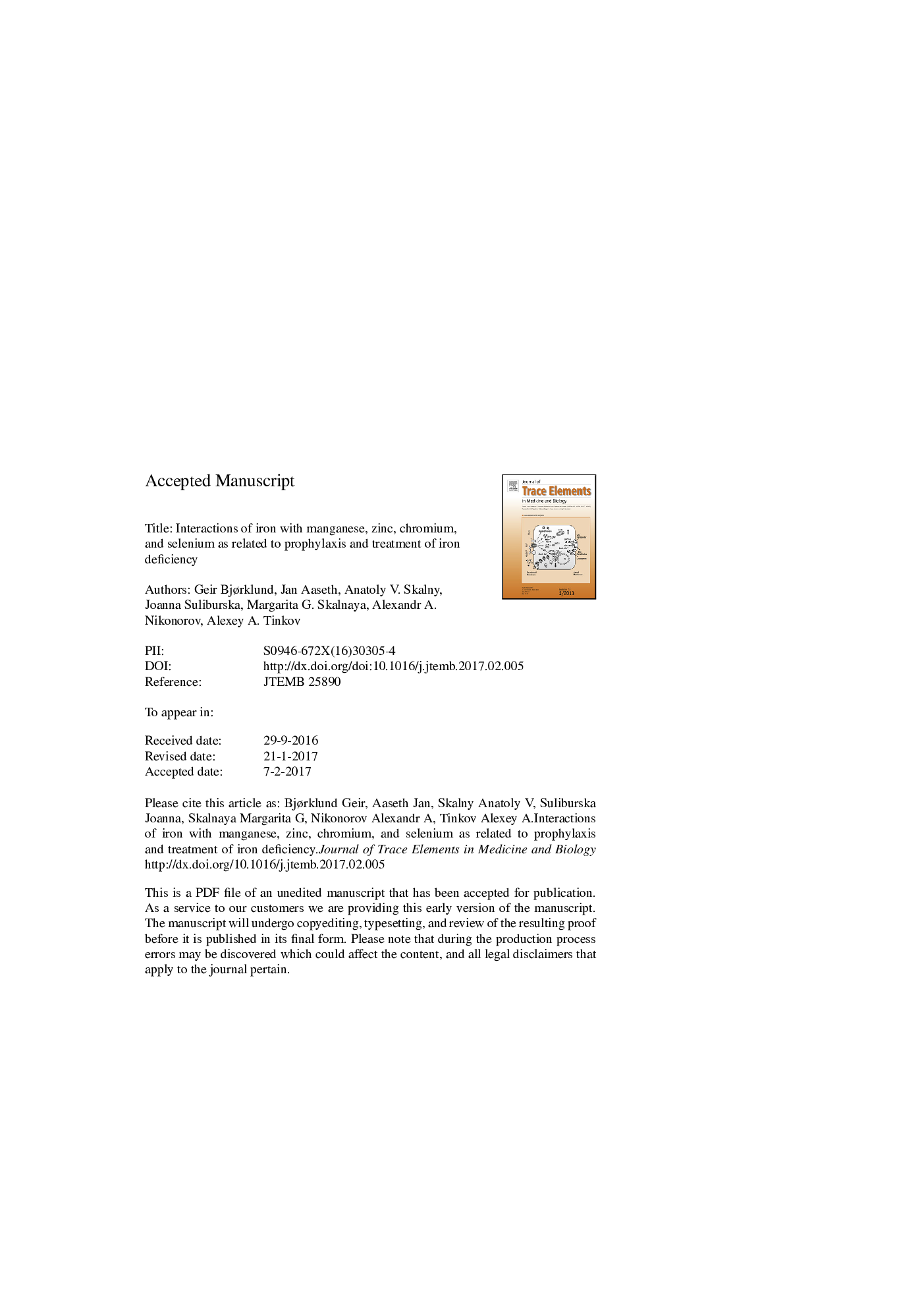| Article ID | Journal | Published Year | Pages | File Type |
|---|---|---|---|---|
| 5138780 | Journal of Trace Elements in Medicine and Biology | 2017 | 52 Pages |
Abstract
Iron (Fe) deficiency is considered as the most common nutritional deficiency. Iron deficiency is usually associated with low Fe intake, blood loss, diseases, poor absorption, gastrointestinal parasites, or increased physiological demands as in pregnancy. Nutritional Fe deficiency is usually treated with Fe tablets, sometimes with Fe-containing multimineral tablets. Trace element interactions may have a significant impact on Fe status. Existing data demonstrate a tight interaction between manganese (Mn) and Fe, especially in Fe-deficient state. The influence of Mn on Fe homeostasis may be mediated through its influence on Fe absorption, circulating transporters like transferrin, and regulatory proteins. The existing data demonstrate that the influence of zinc (Zn) on Fe status may be related to their competition for metal transporters. Moreover, Zn may be involved in regulation of hepcidin production. At the same time, human data on the interplay between Fe and Zn especially in terms of Fe-deficiency and supplementation are contradictory, demonstrating both positive and negative influence of Zn on Fe status. Numerous data also demonstrate the possibility of competition between Fe and chromium (Cr) for transferrin binding. At the same time, human data on the interaction between these metals are contradictory. Therefore, while managing hypoferremia and Fe-deficiency anemia, it is recommended to assess the level of other trace elements in parallel with indices of Fe homeostasis. It is supposed that simultaneous correction of trace element status in Fe deficiency may help to decrease possible antagonistic or increase synergistic interactions.
Related Topics
Physical Sciences and Engineering
Chemistry
Analytical Chemistry
Authors
Geir Bjørklund, Jan Aaseth, Anatoly V. Skalny, Joanna Suliburska, Margarita G. Skalnaya, Alexandr A. Nikonorov, Alexey A. Tinkov,
